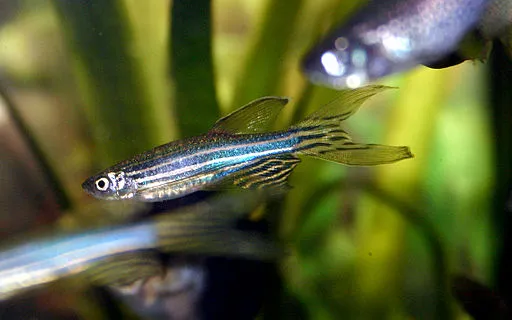Research in the behavioral neurosciences often uses nonhuman models to study the biological mechanisms of behavior. The most commonly studied animals, rats and mice, have generated new insights into the biology of cognition, emotion, learning, social interaction, and more. While mammalian models have traditionally been preferred for their similarities to humans, there are many benefits to using fish as a model organism.
Zebrafish, or Danio rerio, are small freshwater fish commonly found at pet stores. This species in particular appeals to scientists for a variety of reasons. For one, zebrafish embryos are transparent, allowing researchers to easily study internal functions such as cardiac activity and blood flow. Zebrafish also develop rapidly, making it easier and cheaper to study behaviors across the lifespan. And finally, zebrafish are amenable to genetic manipulation studies that make it possible to tease out genetic and environmental influences on behavior. Altogether, these advantages have led to the increased use of zebrafish in studying the biological basis of behaviors (1).

A number of studies have explored and validated the significance of zebrafish for behavioral studies. Similar to research with rodents, a variety of tasks and apparatuses have been developed to assess zebrafish behavior. Through repeated testing and validation, studies support the claim that zebrafish are a good model for studying behavior. For example, the T-maze has been used to show the ability of the zebrafish to reach a habitat containing rewarding stimuli. Similarly, the place preference test has been used to validate that zebrafish express a preference for a particular chamber after being exposed to a rewarding conditioned stimulus. Versions of these tasks and many others have been widely used to study the behavioral capabilities of zebrafish and to determine their behavioral similarities and differences to mammals.
An advantage of the zebrafish model is that it lends itself to pharmaceutical studies because drugs can more easily be administered compared to other models. Many compounds can be simply added to the water. In one study, newly hatched zebrafish were exposed to chlorpyrifos, a commonly used insecticide, to determine its effect on motor skill development. The distance swam over a certain time interval was measured and it was found that there was a statistically significant reduction in mobility observed in the fish exposed to the insecticide versus those that were not (2).
Another experiment was done to determine the effects of scopolamine on habituation and short-term memory. Fish were systematically exposed to a number of taps on their container and the distance swam after each tap was recorded. Both the control and drug-exposed fish showed habituation with a decreasing swim distance, but the control fish showed a brief recovery during the main interval between two sets of tappings. This lead to the conclusion that scopolamine has a disruptive effect on short-term memory in zebrafish (3).
An experiment using a model of the place preference test looked at cocaine sensitivity in zebrafish. Subjects were exposed to cocaine in only one chamber of the apparatus and subsequent tests showed a preference for the same chamber (4).
Anxiety and stress response were tested in zebrafish by observing the initial time spent at the bottom of a tank. The response of the fish to immediately swim down is a defensive mechanism suggesting higher stress levels. It was found that nicotine exposure reduced the time at the bottom and once a certain potency was reached, there was no preference seen at all for the bottom (5). This was not thought to be a result of disorientation because another test on the fish showed that acute nicotine exposure improved accuracy in a memory-based maze test (6).
In behavior research, it is important to have multiple, complementary models that take advantage of interspecific similarities and differences. The studies mentioned above reveal the complexity of zebrafish behavior and help show their value as a model for the study of learning, memory, and cognition. Zebrafish are cheap, provide a good platform for studying the effects of drug administration or genetic manipulation, and allow for a more direct way to observe certain developmental processes. Zebrafish have great potential as a complementary model in behavioral neuroscience.